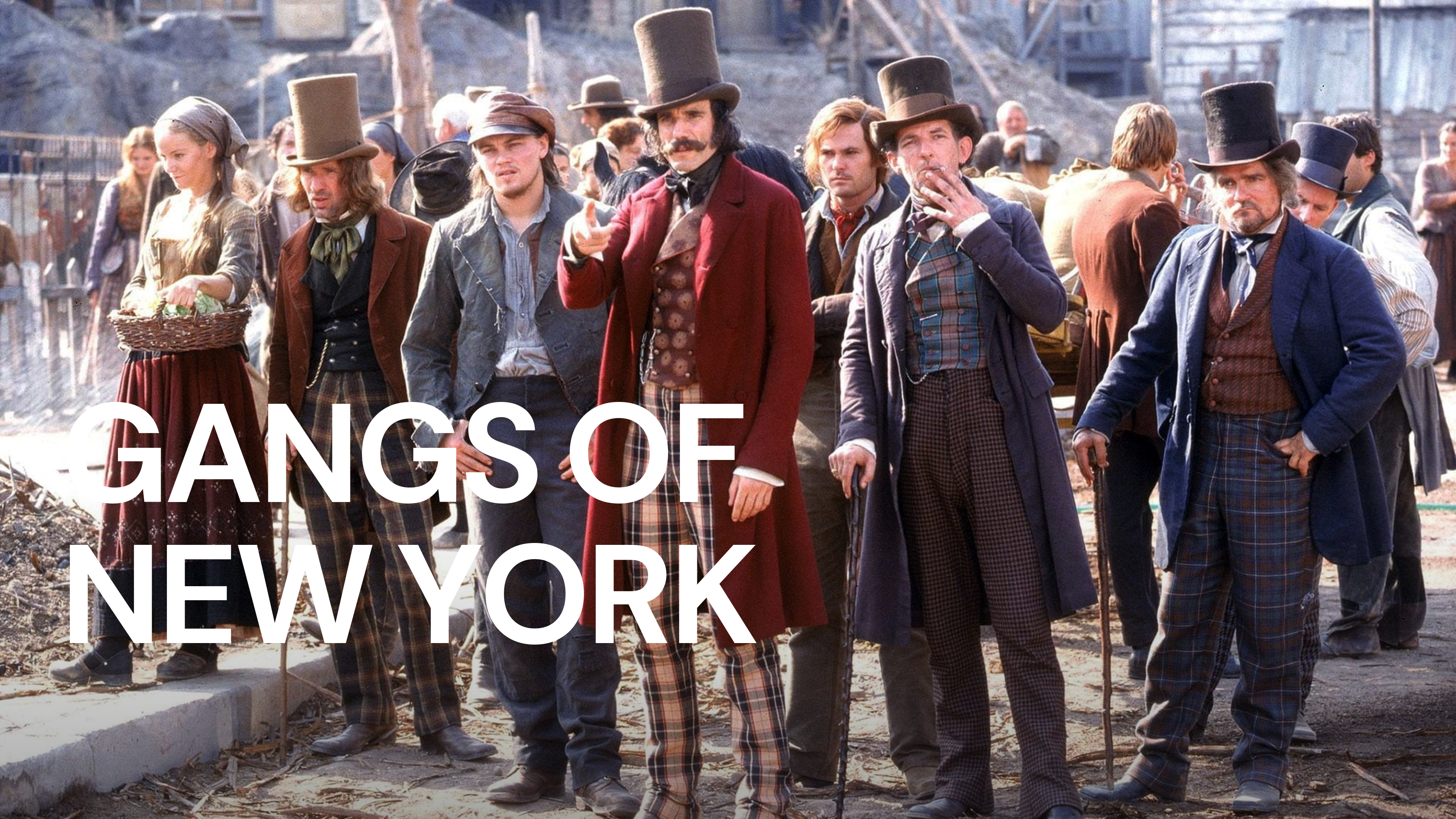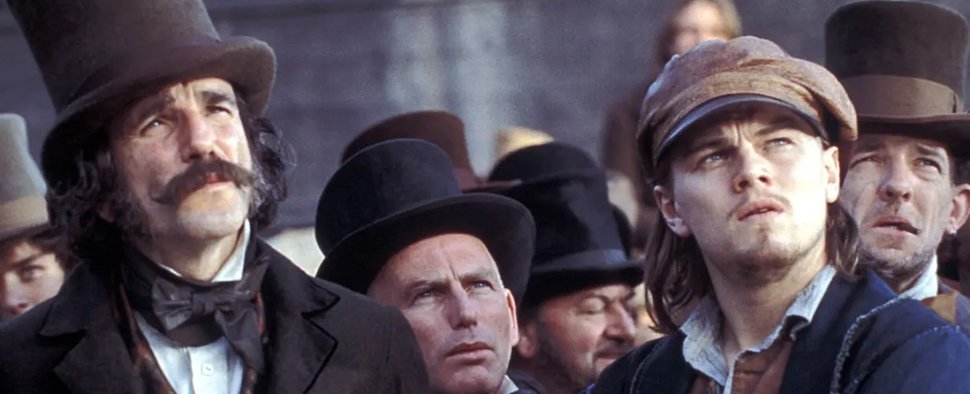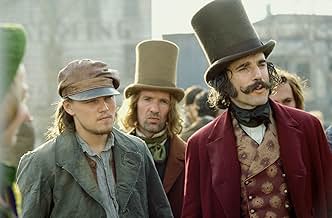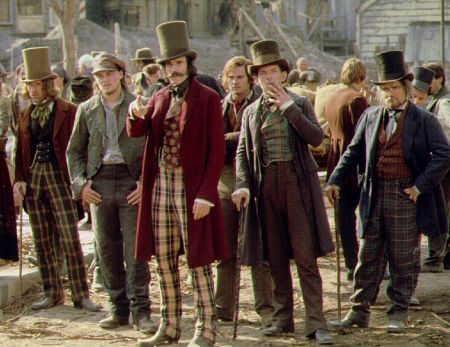🎬 GANGS OF NEW YORK (2002)

Gangs of New York (2002): Martin Scorsese’s Epic Tale of Power, Vengeance, and Survival
Introduction
Gangs of New York, directed by the legendary Martin Scorsese, is an epic historical drama released in 2002. The film stars Leonardo DiCaprio, Daniel Day-Lewis, and Cameron Diaz, with strong supporting roles from Jim Broadbent, John C. Reilly, and Liam Neeson. Set against the violent, chaotic streets of 19th-century New York City, Gangs of New York presents a gritty, powerful story about crime, class struggle, and the fight for power. Known for its breathtaking period detail and intense performances, particularly from Daniel Day-Lewis, the film tackles both personal and societal conflict, showcasing Scorsese’s fascination with the darker side of American history.
Plot Summary
The story is set in 1863, during the turbulent years of the American Civil War. The opening scene depicts a brutal battle in the Five Points neighborhood of Lower Manhattan between two rival gangs: the Nativists, led by the fiercely patriotic Bill “The Butcher” Cutting (Daniel Day-Lewis), and the Dead Rabbits, an Irish immigrant gang led by “Priest” Vallon (Liam Neeson). After Vallon is killed in battle, his young son Amsterdam (Leonardo DiCaprio) is sent away, vowing to avenge his father’s death.
Years later, Amsterdam returns to the Five Points as a young man with a singular mission: to kill Bill the Butcher, who has become the dominant and feared figure in the area. To get close to Bill, Amsterdam integrates himself into his gang, winning Bill’s respect while biding his time for revenge. Along the way, he becomes involved with Jenny (Cameron Diaz), a skilled pickpocket with her own complicated relationship with Bill.
As Amsterdam’s plan unfolds, tensions rise in New York over the Civil War draft, which disproportionately affects the poor and immigrant populations. The film builds toward an explosive climax, where personal vendettas collide with the chaos of the New York City Draft Riots, a historical moment that saw mass violence erupt in the city’s streets. The film’s finale powerfully blends Amsterdam’s revenge plot with the larger historical turmoil, symbolizing the clash between old and new power structures in America.
Themes and Symbolism
Gangs of New York explores several potent themes, including the American immigrant experience, the brutality of gang life, and the concept of power in a city undergoing rapid transformation. Scorsese uses the Five Points as a microcosm for the United States itself — a place where different cultures collide, and the fight for survival leads to deep-seated rivalries and conflicts.
The struggle for dominance between the Nativists and immigrants speaks to issues of belonging and identity. Bill the Butcher, an ardent Nativist, believes that “true” Americans should control the city, rejecting the waves of Irish immigrants arriving in New York. This conflict highlights America’s complicated history with immigration and xenophobia, as well as the struggle for opportunity and acceptance that many immigrants face.
Amsterdam and Bill serve as foils to one another, representing two different visions of masculinity, vengeance, and loyalty. Bill’s brutal philosophy is rooted in survival through violence and dominance, while Amsterdam is driven by a moral need for justice and personal retribution. Their relationship, based on a mix of hatred, respect, and mentorship, complicates the traditional hero-villain dynamic and underscores the murky morality of survival in such a brutal world.
Daniel Day-Lewis’s Performance as Bill the Butcher
Daniel Day-Lewis’s portrayal of Bill the Butcher is one of the film’s most unforgettable aspects. Known for his immersive, method acting, Day-Lewis brings a ferocity and intensity to Bill that is both terrifying and magnetic. His character’s speech, mannerisms, and razor-sharp wit make Bill one of the most compelling villains in modern cinema. Day-Lewis captures the character’s patriotism and sense of honor, twisted as they may be, making him more than a one-dimensional antagonist. His performance earned him an Academy Award nomination and is widely considered one of the greatest in his career.
Historical Setting and Production Design
Scorsese’s meticulous attention to historical detail is evident in the film’s production design. The director worked with production designer Dante Ferretti to recreate the chaotic, crowded, and dangerous streets of 1860s New York. Filmed on massive sets in Italy, the setting of Gangs of New York feels both historically accurate and cinematically captivating, immersing audiences in the grit and grime of the period. The Five Points neighborhood, with its narrow alleys, overflowing tenements, and dimly lit taverns, serves as a perfect backdrop for the story’s themes of struggle and survival.
The film also dives into historical events such as the New York City Draft Riots, one of the largest and deadliest civil disturbances in American history. The riots, which were fueled by resentment toward the draft and racial tensions, erupted in a wave of violence, looting, and destruction. By incorporating these real events, Scorsese gives the story a sense of urgency and connects Amsterdam’s personal quest with the larger societal upheavals of the time.
Visual Style and Cinematography
Cinematographer Michael Ballhaus captures both the beauty and brutality of New York, blending sweeping shots of the cityscape with intimate, visceral portrayals of gang violence. The film’s use of muted tones, harsh lighting, and tight compositions reflect the grittiness of life in the Five Points, while the more expansive shots of the city’s streets and docks emphasize the scale of the chaos. The action sequences are intense and unflinchingly graphic, capturing the raw, physical nature of the fighting that defined gang life in the era.
Critical Reception and Legacy
Gangs of New York was met with critical acclaim and received ten Academy Award nominations, including Best Picture, Best Director for Scorsese, and Best Actor for Daniel Day-Lewis. Critics praised the film’s ambition, historical detail, and the performances, particularly Day-Lewis’s powerful portrayal of Bill the Butcher. However, some critics noted pacing issues and a lack of focus in the narrative, pointing out that the film’s epic scope sometimes overshadowed the intimate personal story at its center.
Despite its flaws, Gangs of New York has left a lasting impact on historical cinema and continues to be celebrated for its ambitious storytelling and vivid portrayal of a rarely depicted period in American history. The film was one of Scorsese’s most ambitious projects, a passion project he had envisioned since the 1970s, and it reflects his fascination with New York City as a character in itself.
Conclusion
Gangs of New York is a visceral and ambitious portrayal of a time and place often overlooked in American history. Through its detailed setting, complex characters, and exploration of themes like identity, power, and revenge, it remains a unique and memorable entry in Scorsese’s filmography. The film captures both the brutality and resilience that defined early New York, portraying a world where survival is paramount, and alliances are constantly shifting. Above all, Gangs of New York stands as a testament to Scorsese’s storytelling prowess and his ability to craft characters and conflicts that resonate long after the credits roll.











